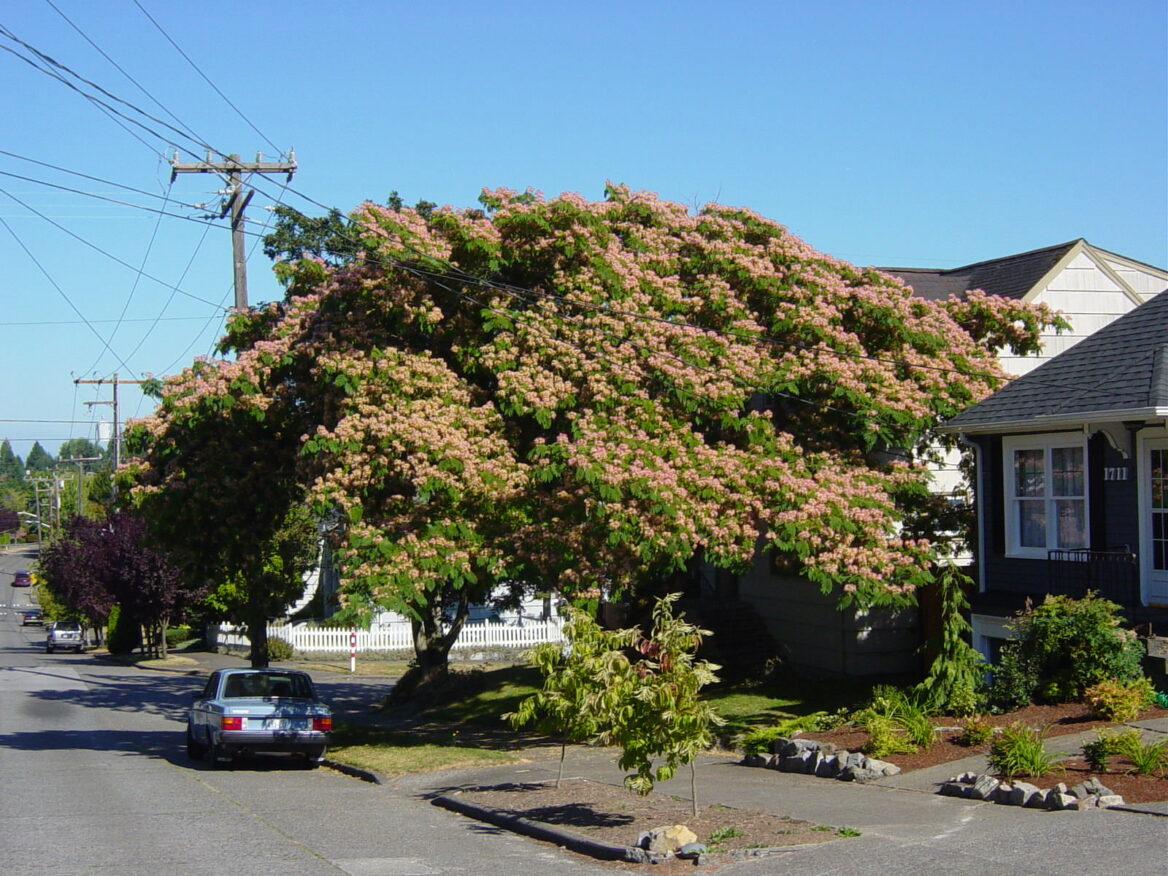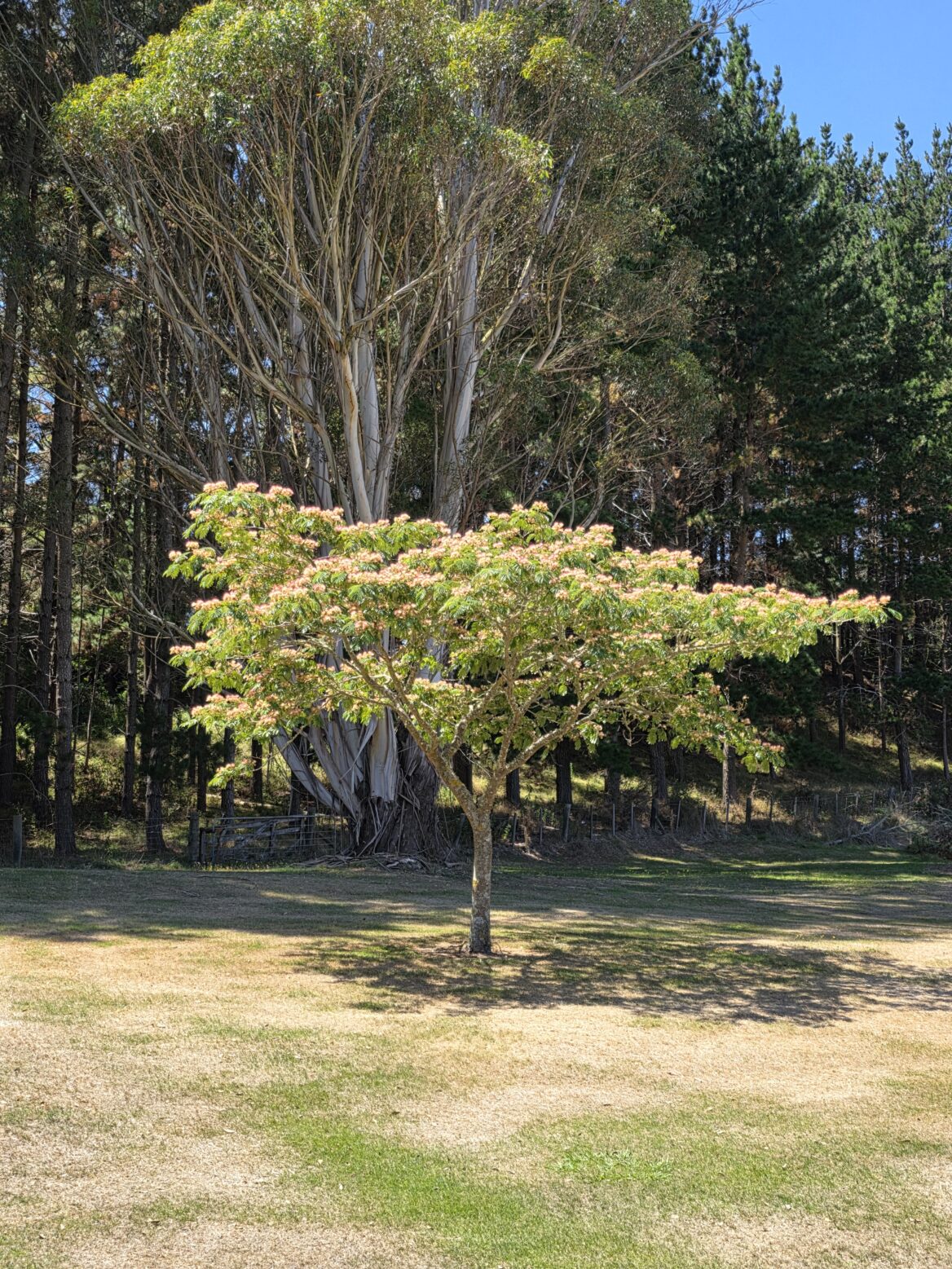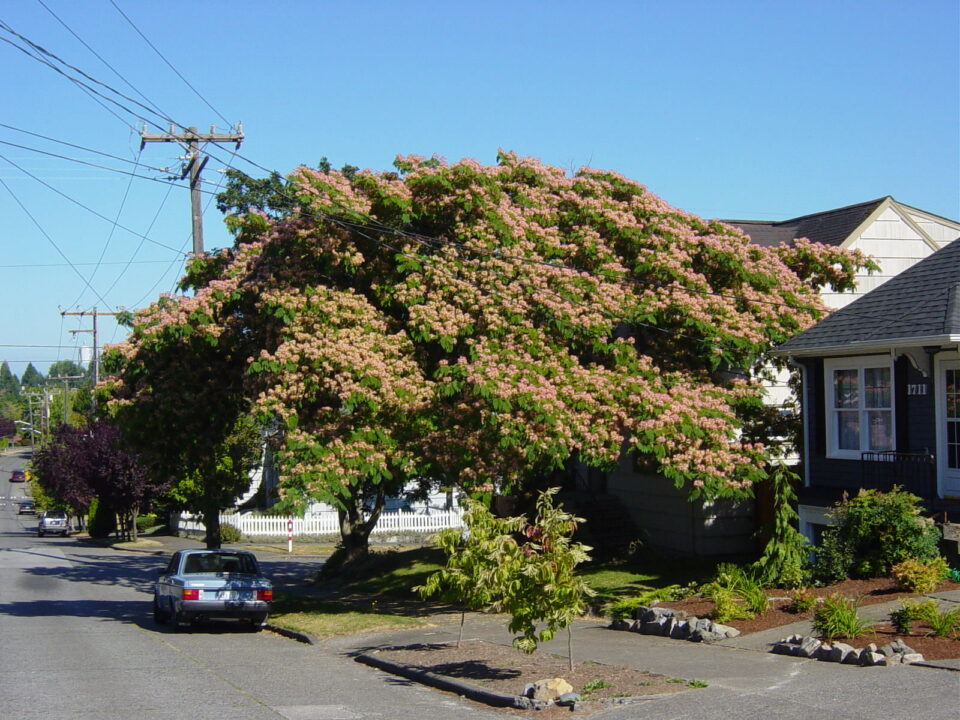Albizia julibrissin ‘Rosea’
Persian Silk Tree
Albizia julibrissin ‘Rosea’ is distinguished by its silky, pink, and fragrant summer flowers that appear on its wide-spreading branches, which are adorned with ferny leaves. It does not leaf out until very late in the spring, and it makes for an excellent shade tree that can tolerate heat and drought. It typically flowers best when grown in full-sun. However, it has weak limbs that can be damaged by strong winds, snow, and ice. Its seeds and seedpods are severely toxic to both humans and animals. Albizia julibrissin ‘Rosea’ is easy to transplant. Albizia julibrissin is deciduous and native to southwestern and eastern Asia. Learn more about Albizia julibrissin.
Other common name(s): Pink Silk Tree
Synonyms: Albizia julibrissin f. rosea, Albizia julibrissin var. rosea
$156.00 – $390.00
Deciduous
Height: 5.0m
Width:
4.0m
Estimated 10 year height and width
Albizia julibrissin ‘Rosea’ stock information
Full Stocklist| Grade | Height | Standard | Available | I/P | Qty / Price |
|---|---|---|---|---|---|
| 45L | 2.4m | 78 | 0 |
$208.00Add to cart |
|
| 35L | -m | 54 | 0 |
$156.00Add to cart |



